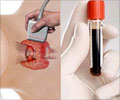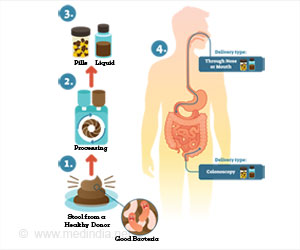January, the first month of the year, is observed as the Thyroid Awareness Month. It aims to create awareness about the dangers of thyroid diseases and also highlights the importance of early detection for better treatment outcomes.

‘January, the first month of the year, is observed as the Thyroid Awareness Month. It aims to create awareness about the dangers of thyroid diseases and also highlights the importance of early detection for better treatment outcomes. So, let us all go the extra mile on this Thyroid Awareness Month to have a healthy thyroid gland.’
Read More..




The thyroid gland is located in the front of the neck and under the voice box. It produces hormones that help the body control the rate of metabolism, and regulate the production and consumption of energy. When thyroid function is accelerated, the condition is called hyperthyroidism; when slowed, it is called hypothyroidism. Imbalances in thyroid function may be a result of environmental, autoimmune, or genetic factors. Additionally, thyroid issues may lead to cancer.Read More..
Thyroid disease affects roughly 200 million people worldwide, and thyroid cancer is on the rise, with roughly 52,000 new cases diagnosed in 2019, according to the American Cancer Society. Three out of four thyroid cancer diagnoses are made in women.
Data from the American Thyroid Association shows that more than 12 percent of the U.S. population will develop a thyroid condition in their lifetime, and the cause of these problems is largely unknown. An estimated 20 million Americans have some form of thyroid disease and up to 60 percent of them don’t know they have it, so they go undiagnosed and untreated.
“Women are five to eight times more likely than men to have thyroid issues, and one in eight women will develop a thyroid disorder. People with a family history of thyroid disease and/or thyroid cancer, and exposure to high doses of radiation, are also at increased risk,” said Terry Davies, MD, Co-Director of the Mount Sinai Thyroid Center at Union Square and Professor of Medicine (Endocrinology, Diabetes and Bone Disease) at the Icahn School of Medicine at Mount Sinai.
How to Perform a Thyroid Neck Self-Exam:
- Use a mirror and focus on the lower middle area of your neck, above the collarbones and below the Adam’s apple (larynx). Your thyroid gland is located in this area of your neck.
- While focusing on this area in the mirror, tip your head back.
- Take a drink of water and swallow.
- As you swallow, look at your neck. Check for any bulges or protrusions in this area when you swallow. Reminder: Don’t confuse the Adam’s apple with the thyroid gland. The thyroid gland is located further down on your neck, closer to the collarbone. You may want to repeat this process several times.
- If you do see any bulges or protrusions in this area, see your physician. You may have an enlarged thyroid gland or a thyroid nodule and should be checked to determine whether cancer is present or if treatment for thyroid disease is needed.
- Hyperthyroidism is an overactive thyroid and hypothyroidism is an underactive thyroid.
- Symptoms of hyperthyroidism are rapid weight loss, high blood pressure, anxiety, and insomnia.
- Symptoms of hypothyroidism are weak or slow heartbeat; muscular weakness; constant fatigue; weight gain; depression; slow reflexes; sensitivity to cold; thick, puffy, or dry skin; slowed mental processes and poor memory; and constipation.
- Goiter is another thyroid condition; it involves a visibly enlarged thyroid gland, often causing difficulty swallowing or breathing.
- Thyroid cancer is the fifth most common cancer in women.
- The number of new cases of thyroid cancer is growing most rapidly among all cancers in both men and women, due to increased detection.
Advertisement
When it comes to thyroid cancer, a large number of women develop this during their reproductive age. Since thyroid cancer tends to be mediated by hormones in the body, it tends to grow faster when patients are pregnant. There is no special cancer screening recommendation for pregnant women.
Advertisement
Radiofrequency Ablation for Thyroid Nodules
Mount Sinai West is one of only two hospitals in New York State offering a minimally invasive procedure to treat non-cancerous thyroid nodules that are symptomatic and would have otherwise required invasive surgery for removal. The procedure is called radio-frequency ablation (RFA). It offers eligible patients a much quicker recovery, less pain and risk of infection, and no scarring. With RFA, surgeons use guided ultrasound to deliver radio-frequency current to heat up and shrink the thyroid nodule. RFA can be done on patients with large non-cancerous nodules that cause swallowing, voice, breathing, and neck discomfort.
Patients who undergo RFA can return to normal activity the day after the procedure and can exercise within several days. Additionally, they are extremely unlikely to require permanent thyroid hormone medication. Patients who have standard thyroid nodule surgery typically can’t resume normal activity for at least a month and 20 to 30 percent of these patients require thyroid medication.
“Radiofrequency ablation for thyroid nodules has been performed in Korea for over a decade and throughout Europe and their outcomes are excellent. The published data shows impressive nodule shrinkage rates of more than 80 percent with RFA that is maintained over years of follow-up,” explained Catherine Sinclair, MD, Associate Professor of Otolaryngology at the Icahn School of Medicine at Mount Sinai and Director of Head and Neck Surgery at Mount Sinai West.
“Thyroid nodules are very common and, although many people will never require any intervention for their nodules, there is a significant minority who will seek treatment due to symptoms. I expect RFA to be a terrific new option for these patients.”
Ethanol Ablation for Thyroid Nodules
Another noninvasive procedure, performed at Mount Sinai-Union Square, ethanol ablation is when an alcohol solution is injected into thyroid nodules, killing cells and causing the masses to slowly shrink. The procedure leaves only a small scar and is performed in office with local anesthesia.
“The candidates for RFA and ethanol ablation are very similar,” says Maria Brito, MD, Co-Director of the Mount Sinai Thyroid Center at Union Square. Dr. Brito and Michael Via, MD, both Associate Professors of Medicine (Endocrinology, Diabetes and Bone Disease) at the Icahn School of Medicine at Mount Sinai, are two of only a handful of physicians in the New York metropolitan region to perform ethanol ablation.
“The procedures will not necessarily eliminate the nodule completely, and patients will still need to have ultrasound follow-ups to monitor the nodule,” Dr. Brito says. “But in appropriate cases, they are a terrific option. They make it very easy for the patient.”
Source-Newswise















